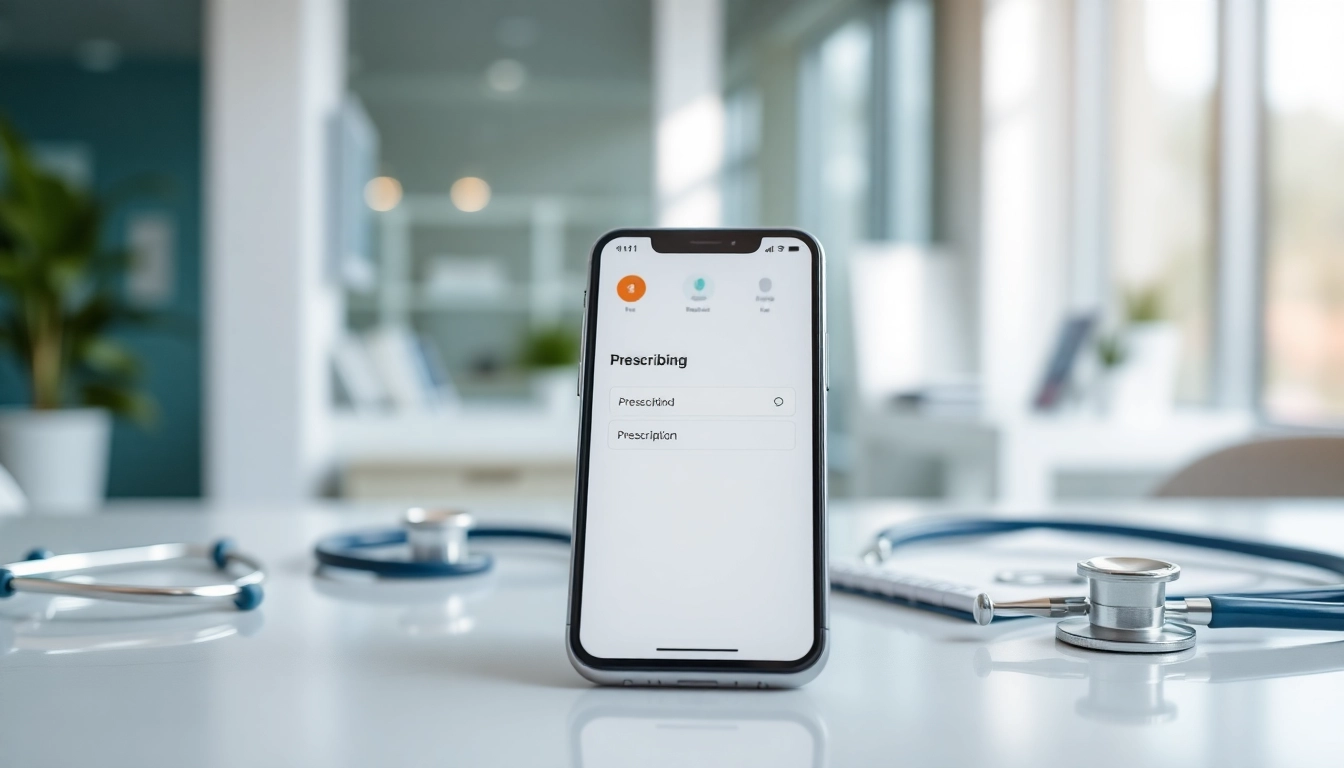Understanding Electronic Prescribing
Definition and Importance
Electronic prescribing, commonly known as e-prescribing, is a digital method used by healthcare providers to prescribe medications electronically, replacing traditional paper prescriptions. This innovative technology allows prescribers to send prescriptions to pharmacies via secure online portals, streamlining the entire process. The significance of e-prescribing cannot be overstated, as it addresses many challenges inherent in manual prescription methods, such as handwriting errors, lost or misplaced prescriptions, and inefficiencies in the prescription fulfillment process. Moreover, benefits of electronic prescribing include enhanced patient safety and improved healthcare provider workflows.
Comparison with Traditional Prescribing
Traditional prescribing methods have long been plagued by significant hurdles. Prescribers often handwrite prescriptions, leading to misinterpretations and errors owing to illegible handwriting. In contrast, e-prescribing utilizes standardized electronic forms that enhance clarity and accuracy. Additional benefits of electronic prescribing also manifest in the instantaneous notification of potential drug interactions, allergies, and duplicate therapies, ensuring patient safety. Furthermore, electronic systems typically provide feedback to prescribers and pharmacists, facilitating better medication management.
Role in Modern Healthcare
In modern healthcare, the role of electronic prescribing extends beyond just sending prescriptions. It represents a fundamental shift towards digitization that seeks to enhance patient outcomes, reduce costs, and improve overall healthcare delivery. The integration of e-prescribing into Electronic Health Records (EHRs) fosters a more holistic view of patient health, allowing providers to make informed decisions based on comprehensive data. This technological advancement not only aids in accurate medication management but also aligns with transitioning healthcare analytics, monitoring patient responses to treatments, and ensuring adherence.
Benefits of Electronic Prescribing
Improved Accuracy and Safety
One of the foremost advantages of electronic prescribing is the significant improvement in accuracy and patient safety. Manual prescriptions often result in errors due to misinterpretation of handwriting, which can lead to harmful consequences for patients. E-prescribing eliminates this issue by utilizing clear digital formats. Additionally, most e-prescribing systems automatically check for drug interactions, allergies, and contraindications. This capability not only minimizes the chances of adverse drug events but also enhances patient trust in the healthcare system. A study indicated that e-prescribing could drastically reduce medication errors, strengthening the quality of care provided.
Enhanced Efficiency in Prescription Processing
E-prescribing dramatically enhances the efficiency of the prescription process. Unlike traditional methods that may involve multiple steps – writing, delivering, or calling in prescriptions – electronic systems allow healthcare providers to transmit prescriptions directly to the pharmacy within moments. This not only saves time for physicians and patients, but it also increases pharmacy efficiency, enabling them to prepare prescriptions faster. The automation of prescription processing leads to reduced wait times for patients, facilitating a smoother medication management experience. Moreover, the reduction in paperwork allows administrative staff to devote their time to more critical tasks, further optimizing healthcare delivery.
Cost-Effectiveness for Healthcare Providers
Implementing electronic prescribing can lead to meaningful cost savings for healthcare providers. By digitizing the prescription process, providers can reduce the expenses associated with printing, refilling, and managing paper prescriptions. Clinics and hospitals embracing e-prescribing often report lower operational costs due to enhanced efficiency and minimized errors. Additionally, reduced medication errors lower the costs related to adverse drug events, hospital readmissions, and legal liabilities, presenting compelling financial incentives for healthcare providers to adopt electronic systems. In the long run, the cost-effectiveness of e-prescribing contributes to healthier financial performance for healthcare institutions.
Challenges in Implementing Electronic Prescribing
Technological Barriers
Despite the numerous benefits of electronic prescribing, challenges do exist, particularly regarding technology adoption. Some healthcare facilities may struggle with outdated technology or systems that are not compatible with e-prescribing solutions. Ensuring that existing infrastructure can support new systems requires significant investment and planning. Overcoming these technological barriers often necessitates collaboration with IT professionals who can assist in selecting appropriate e-prescribing software that aligns with a healthcare facility’s specific needs.
Training and Adaptation Issues
Transitioning from traditional prescribing methods to electronic systems requires a well-structured training program for healthcare staff. Resistance to change is common, especially among seasoned practitioners used to their routines. Addressing adaptation issues is crucial for successful implementation. Proper training sessions that cover system usage, potential benefits, and troubleshooting can foster a more accepting environment and help reduce anxiety. Engaging all staff members in the transition process creates a sense of ownership and encourages a positive attitude towards the new system.
Interoperability Concerns
Interoperability represents another significant challenge for e-prescribing. For electronic prescriptions to be truly effective, various systems used by different healthcare entities must seamlessly communicate and share data. Without proper integration, vital patient information may be lost or miscommunicated. Future developments in e-prescribing technology include standardizing protocols to foster better interoperability and emphasizing collaboration among software providers. Achieving this goal is crucial for enhancing the overall functionality of electronic prescribing systems, ultimately benefiting patient care.
Best Practices for Effective Electronic Prescribing
Choosing the Right E-Prescribing System
The success of electronic prescribing hinges largely on selecting the right e-prescribing system. Healthcare providers should assess their specific requirements and consider factors such as user-friendliness, integration capabilities with existing systems, compliance with local regulations, and support services offered by vendors. An ideal system should offer comprehensive features, including medication lists, drug interaction alerts, and easy refill requests. Engaging stakeholders in the selection process can also lead to better-informed decisions and higher overall satisfaction with the final choice.
Training Staff and Patients
Effective training is a cornerstone of successful electronic prescribing implementation. Healthcare staff should receive thorough education on using e-prescribing systems, including troubleshooting common issues and understanding software updates. Furthermore, educating patients about the benefits of e-prescribing and how to manage their prescriptions electronically can streamline outpatient care. Patient engagement plays a vital role in the success of e-prescribing, as informed patients are more likely to adhere to prescribed therapies and communicate effectively with healthcare providers.
Continuous Monitoring and Feedback
To ensure that the e-prescribing system operates effectively, continuous monitoring and feedback are essential. This involves regularly assessing the usage of the system, collecting feedback from healthcare providers, pharmacists, and patients, and making necessary adjustments. Conducting performance audits can help identify areas for improvement and highlight features that are underutilized. Establishing a feedback mechanism promotes ongoing dialogue among all parties involved, fostering improvements in the system and ensuring that it meets the evolving needs of users.
Future of Electronic Prescribing
Innovations on the Horizon
The future of electronic prescribing looks promising, with several innovations on the horizon poised to further enhance its effectiveness. Emerging technologies such as telemedicine have started to integrate e-prescribing within their service frameworks, allowing providers to prescribe medications remotely. Additionally, advancements in mobile applications enable patients to manage their prescriptions directly from their smartphones. As the healthcare landscape continues to evolve, these innovations will enhance e-prescribing’s role in improving patient care.
Potential Impact on Patient Care
As e-prescribing systems improve and expand, their impact on patient care will likely increase. Enhanced data access and the integration of patient health records can lead to more personalized medication management. Furthermore, reduced medication errors can contribute to better patient outcomes, increasing overall satisfaction with healthcare services. As more facilities adopt e-prescribing, the collective improvement in patient management is expected to have profound implications for healthcare as a whole, changing how providers practice medicine across various settings.
Integrating AI and Machine Learning
The integration of artificial intelligence (AI) and machine learning within e-prescribing is an exciting prospect that could reshape its future. These technologies can analyze vast amounts of patient data to identify trends, predict medication adherence, and suggest alternative therapies based on patient history. As AI and machine learning algorithms improve, they can enhance the safety and effectiveness of e-prescribing while providing more tailored solutions for patients’ healthcare needs. The synergy of these technologies could lead the way to an increasingly adaptive approach to medication management in healthcare.



